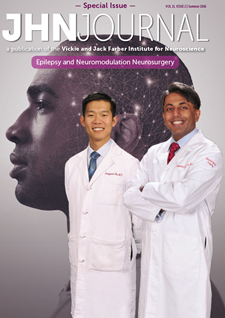Abstract
A paradigm shift has occurred in Neuroscience, with most brain diseases, even those considered focal, now viewed as having repercussions throughout the whole brain. As one might suspect these brain networks effects are quite complex, so multiple neuroimaging techniques are needed to view them.
Structural magnetic resonance imaging (MRI) is used to determine the health of brain tissue, particularly in the cortex. Resting-state functional connectivity (rs-fMRI) is used to identify cortical regions communicating with each other. Diffusion imaging can verify that any two regions are, indeed, anatomically connected through white mater fibers. Lastly, functional MRI can be used to define the specific cognitive information and processes the regions and networks may be communicating about. Data from all four imaging technologies can be gathered during one MRI scanning session with a minimal increase in scanning time and no increase in patient discomfort.
A key goal of our laboratory has been to create individual brain maps of cognitive functions that may be negatively affected by invasive brain treatments such as thermal ablation, brain stimulation, or resective brain surgery. Neurologic disease often leads to alterations in how and where the brain stores cognitive skills and behaviors. In some cases, changes in how the brain stores information can be so complete that the regional network implementing a function (e.g., expressive language) can be entirely discordant with established theories about the brain localization of function (e.g., Broca’s, Wernicke’s in the right not the left hemisphere; see Figure 1b). An accurate map of where in the brain key cognitive functions are located can help avoid removal of intact, functional tissue, and guide access routes so the surgeon can reach and remove the pathology. Such brain maps also save the neurosurgeon time because they can more rapidly identify the location of functional areas near the diseased or pathologic tissue that needs to be removed.
Pages: 44-49.
Recommended Citation
Tracy, PhD, ABPP/CN, Joseph I.; Doucet, PhD, Gaelle Eve; He, PhD, Xaiosong; Pustina, PhD, Dorian; and Osipowicz, PhD, Karol
(2016)
"Advances in Clinical Neuroimaging,"
JHN Journal: Vol. 11:
Iss.
2, Article 9.
DOI: https://doi.org/10.29046/JHNJ.011.2.009
Available at:
https://jdc.jefferson.edu/jhnj/vol11/iss2/9

